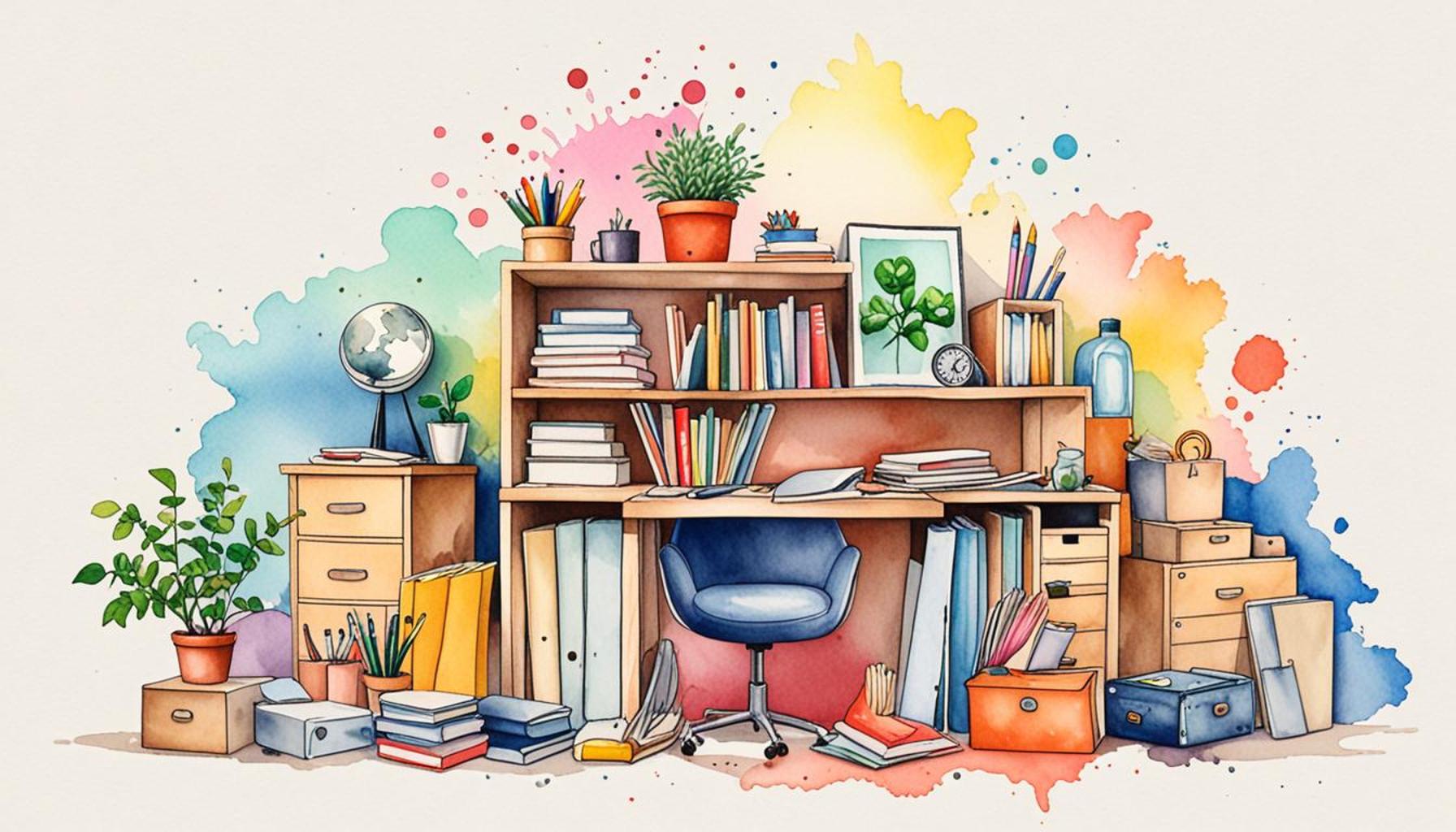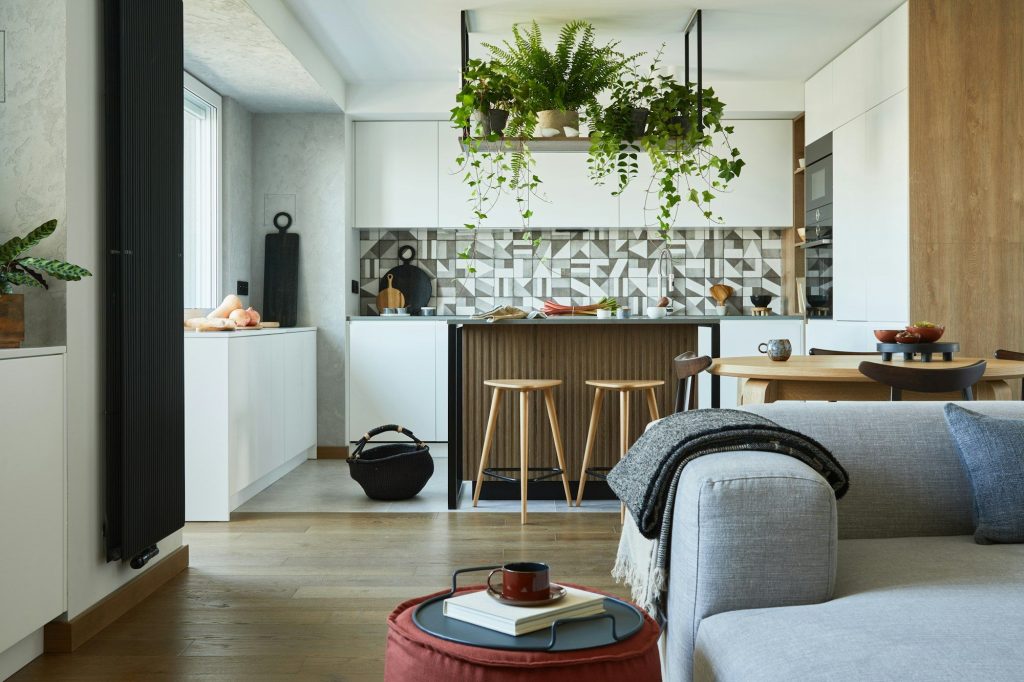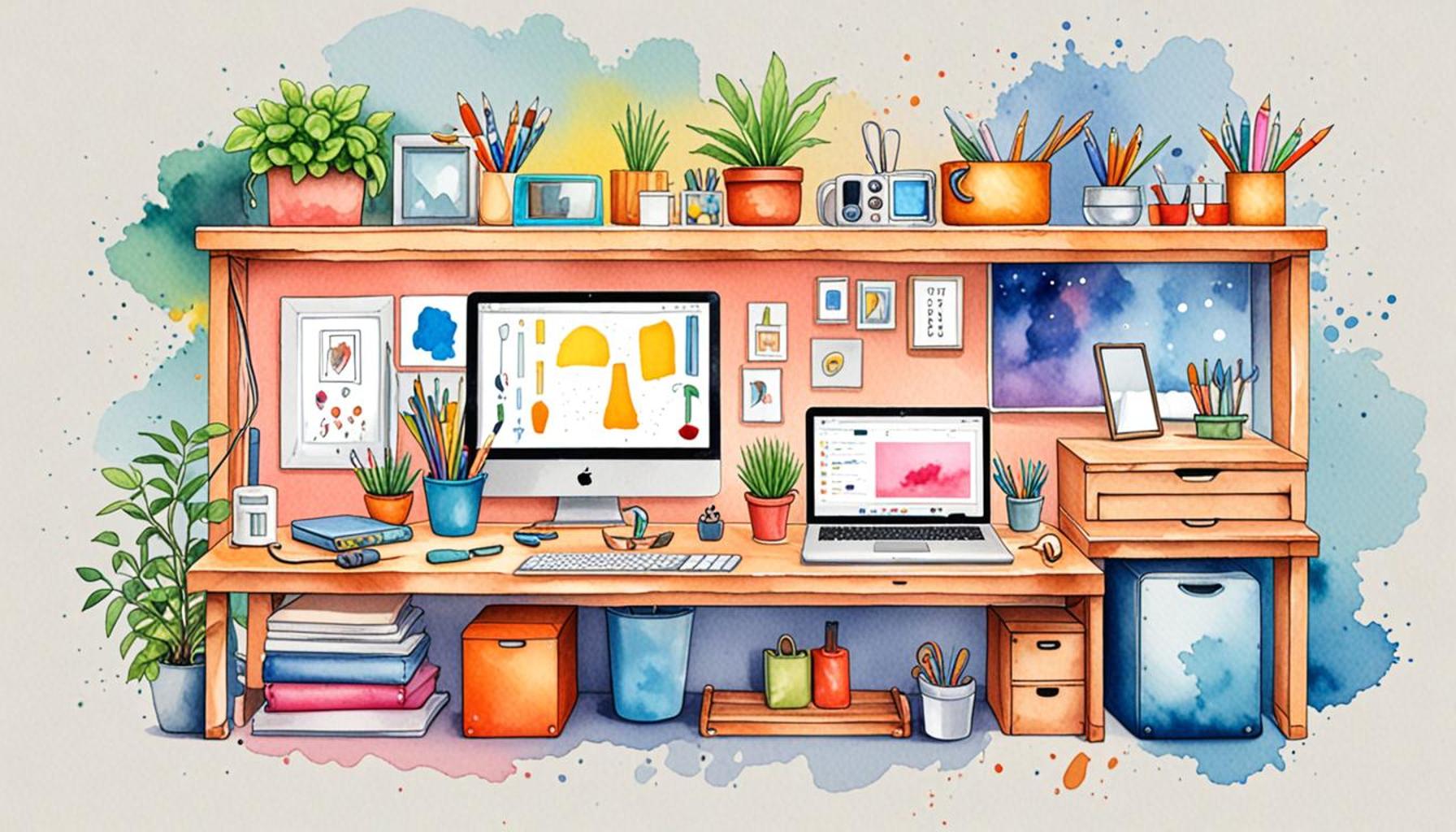Organizing the Chaos: Decluttering Techniques to Improve Functionality in Minimalist Spaces

Embrace Functional Minimalism
In our fast-paced world, the quest for clarity and simplicity has taken root in our homes. With the rise of minimalist design, many are discovering that a decluttered space fosters not just a sense of calm but also enhanced functionality. This article delves into effective strategies that can transform chaotic environments into harmonious sanctuaries.
Why Declutter?
Removing unnecessary items from your living space offers several benefits that are both practical and emotional:
- Improved Productivity: A tidy environment can lead to better focus. Research suggests that working in a clutter-free space can enhance concentration, leading to increased productivity by as much as 20%. This is particularly relevant in a world where the edges of work and home often blur.
- Increased Space: More room allows for creativity and movement. By letting go of what you don’t use or love, you can transform a cramped living room into an open area, perfect for yoga sessions or family gatherings.
- Stress Reduction: Clutter-free zones promote relaxation and peace of mind. Studies indicate that individuals surrounded by clutter are often more anxious. The act of decluttering can be therapeutic, providing a tangible sense of control over one’s environment.
But how can one achieve such a transformation? The techniques range from simple daily habits to structured approaches that make decluttering a regular practice. Let’s explore practical decluttering techniques that can enhance functionality in your minimalist spaces.
Key Techniques to Implement
Here are some foundational methods to consider:
- Divide and Conquer: Break down areas into smaller sections. For example, tackle one drawer or cabinet at a time. This makes the task feel less overwhelming and allows you to see progress quickly.
- One In, One Out: For every new item, remove an old one. This principle encourages mindful consumption, ensuring that your home doesn’t gradually fill up again. If you splurge on a new pair of shoes, consider donating an older pair you no longer wear.
- Functional Furniture: Invest in multipurpose items that save space. Consider a coffee table with hidden storage or a sofa bed for small living spaces. Such choices maximize utility while adhering to a minimalist aesthetic.
As we navigate through these techniques, it is evident that small changes can lead to dramatic shifts in your living space. By embracing a minimalist ethos, clutter will no longer rule your home—freedom will. Discover the joy of a simplified life where every item serves a purpose and brings about a sense of peace and clarity. Dive deeper into the world of functional minimalism, and let your home reflect the simplicity and beauty that this lifestyle offers.

DISCOVER MORE: Click here to learn how mindfulness can declutter your life
Transforming Your Space with Intentionality
Decluttering is not merely a task; it is a lifestyle shift grounded in intentionality and purpose. As you embark on this journey to organize the chaos, it is essential to understand that every item in your home should serve a specific function or bring you joy. Minimalism teaches us to appreciate quality over quantity, encouraging us to invest in things that enhance our lives rather than detract from them. This approach can help cultivate a serene living environment, significantly impacting your mental health and overall well-being.
To begin this transformation, consider the following strategies that promote mindfulness while streamlining your space:
- The Three-Box Method: This approach involves categorizing items into three distinct boxes: keep, donate, and trash. As you move through each space, critically assess each item. This technique not only simplifies decisions but also eases the emotional heaviness of parting with belongings. For instance, while sorting through your wardrobe, you may find a pair of jeans you haven’t worn in years. By placing it in the donate box, you give someone else the chance to wear them, creating a positive impact. The clarity that comes from this division often leads to energizing revelations about your space, illuminating how much you can truly live without.
- Schedule Decluttering Sessions: Designate specific times for decluttering, much like you would for any important appointment. Setting aside even 15-30 minutes each week can lead to significant progress over time. For example, choose a weekend morning to tackle the kitchen drawers or a Tuesday evening to sort through books. Building this habit encourages consistency, gradually creating a clutter-free environment. Eventually, decluttering becomes ingrained in your routine, transforming the way you live and interact with your surroundings.
- Assess Your Storage Solutions: Evaluate the effectiveness of your current storage systems. Are they truly serving you, or are they contributing to the clutter? Upgrading to clear bins can dramatically enhance visibility and accessibility. When items are organized in a way that allows for easy recognition, you reduce the likelihood of repurchasing duplicates, ultimately saving both money and space. Furthermore, consider investing in multifunctional furniture, like an ottoman with hidden storage, which can streamline organization while adding to your home’s aesthetic.
It is also valuable to recognize the emotional attachments often tied to belongings. Nostalgia can cloud our decision-making process, prompting us to hold on to things long past their functional use. For example, a childhood stuffed animal may evoke fond memories, yet if it resides in a box gathering dust, it may be time to reconsider its place in your life. Approaching decluttering with compassion allows for a gentle release of items that may no longer serve a purpose, while acknowledging the emotional significance they once held.
As we delve deeper into the world of functional minimalism, remember that the goal is not perfection but rather progress. Every small step, whether it’s donating a few items or reorganizing a messy drawer, contributes to a more serene and usable space. Embrace the challenges as opportunities to redefine your relationship with your belongings, fostering a home that reflects your values, enhances your lifestyle, and cultivates a sense of peace amidst the chaos.
In conclusion, the journey of decluttering and transforming your space with intentionality can deeply enrich not only your living environment but also your overall quality of life. With each mindful choice, you can create a space that feels lighter, fresher, and more aligned with who you are today.
| Technique | Benefits |
|---|---|
| The 30-Day Declutter Challenge | This technique encourages individuals to remove one item on the first day, two on the second, and so on, which fosters a manageable approach to minimalism and promotes sustained decluttering. |
| Box Method | Using boxes can simplify the decision-making process; categorize items into ‘keep’, ‘donate’, or ‘discard’, facilitating a clearer workspace and enhancing functionality in minimalist spaces. |
| Digital Decluttering | Organizing files and emails not only frees up storage space but also improves mental clarity, contributing to a more functional environment in both personal and professional settings. |
| One In, One Out Rule | This principle keeps clutter at bay by ensuring that for every new item brought in, an existing item must be removed, encouraging mindfulness and maintaining minimalist integrity. |
Exploring techniques like the 30-Day Declutter Challenge or the One In, One Out Rule reveals how systematic approaches can transform your living environment. Each technique not only provides practical steps but also fosters a deeper understanding of consumption and ownership, enhancing your journey towards a more organized space. By integrating these methods into your life, experience the invigorating effect of a clutter-free space, which can elevate overall functionality. From a simplified lifestyle to minimized stress, the benefits of effective decluttering techniques are abundant and worthy of attention. Embracing these strategies can lead to permanent change, encouraging readers to explore further.
DIVE DEEPER: Click here to discover more
Creating Functional Zones for Enhanced Living
Once you’ve addressed the clutter, the next step is to focus on how to redefine your living area through the creation of functional zones. Organizing your space into clearly defined areas can significantly improve its functionality while reinforcing the principles of minimalism. Each zone should fulfill a unique purpose, enabling you to effortlessly access everything you need, while minimizing distractions from the chaos that often accompanies multi-purpose spaces.
Begin by assessing the way you currently use your living environment. Does your workspace blend seamlessly into your living area? Are the children’s play items scattered throughout the home, making them harder to find? By carving out dedicated spaces for various activities, you can establish an order that makes daily life infinitely more manageable. Here are some strategies to consider:
- Designate Specific Areas: Allocate specific zones for particular activities, such as reading, working, or entertaining. If you find yourself working from a cozy corner of your living room, consider adding a small desk or positioning a comfortable chair to create an intentional workspace. You might also introduce a quiet nook near a window filled with natural light to serve as your reading corner. When everything has its place, you’re more likely to maintain organization and reduce clutter.
- Utilize Multi-Functional Furniture: In the world of minimalism, every piece counts. Investing in multi-functional furniture not only maximizes the use of your available space but also simplifies the overall aesthetic of your home. A coffee table that doubles as storage or a bed with drawers beneath can keep areas tidy while serving multiple purposes. Choose pieces that resonate with your style to elevate both functionality and ambiance without sacrificing elegance.
- Color Code and Label: Outfitting each zone with color-coded bins or labeled containers serves dual purposes of aesthetic appeal and practical organization. For children’s play areas or craft corners, for example, use brightly colored boxes with labels that encourage them to put things back in their proper places. Not only does this foster a habit of organization, but it also adds an element of fun to an often tedious task.
Furthermore, consider employing vertical space wherever feasible. In many cases, homes in the United States are built with limited square footage, and utilizing walls for storage can be a game-changer. Wall-mounted shelves, hanging organizers, or hooks can free up valuable floor space while keeping your belongings accessible. This approach can be particularly effective in kitchens, garages, and home offices.
Additionally, maintaining functionality requires a commitment to regularly reassessing your zones. As your needs change—whether due to lifestyle adjustments, family growth, or seasonal shifts—your designated spaces may also need tweaking. Keeping a few versatile items handy will allow you to adapt your zones without starting the decluttering process from scratch each time.
Incorporating these strategies into your daily life not only enhances the functionality of your minimalist spaces but also fosters a sense of harmony and efficiency. By living with intention and thoughtfully organizing your environment, you are actively creating a home that serves as a backdrop for a fulfilling life, reinforcing your commitment to maintain a peaceful and productive atmosphere. So, take the time to evaluate, redefine, and enjoy the simplicity that functional zones can bring to your living space.
DISCOVER MORE: Click here to learn about mindful consumption
Concluding Thoughts on Decluttering for Minimalist Spaces
In our increasingly hectic lives, the art of decluttering has emerged as a powerful tool for enhancing not just the aesthetics of our spaces, but also their functionality. Embracing minimalist principles allows individuals to better manage their environment, leading to improved mental clarity and an overall sense of well-being. As we’ve explored, the journey to creating functional zones within your home is an ongoing, evolving process that requires intention, creativity, and adaptability.
By focusing on designated areas, employing multi-functional furniture, and utilizing clever storage solutions, you can substantially reduce chaos and elevate the efficiency of your daily living. Moreover, the incremental practice of regularly reassessing your zones according to lifestyle changes ensures that your home remains a sanctuary conducive to productivity and calm.
Remember, decluttering isn’t merely about reducing the amount of stuff you own; it’s about curating an environment that resonates with your values and enhances your quality of life. As you embark on this journey, consider that every small step contributes to a more harmonious living space. The minimalist lifestyle is not without its challenges, yet the benefits of clarity and functionality far outweigh the discomfort of letting go. Seize this opportunity to not just organize your home, but to foster a lifestyle rich in simplicity, balance, and functionality.
So, gather your thoughts, assess your spaces, and take action. With each effort to declutter and redefine, you are one step closer to discovering a genuinely fulfilling and efficient way of living.


